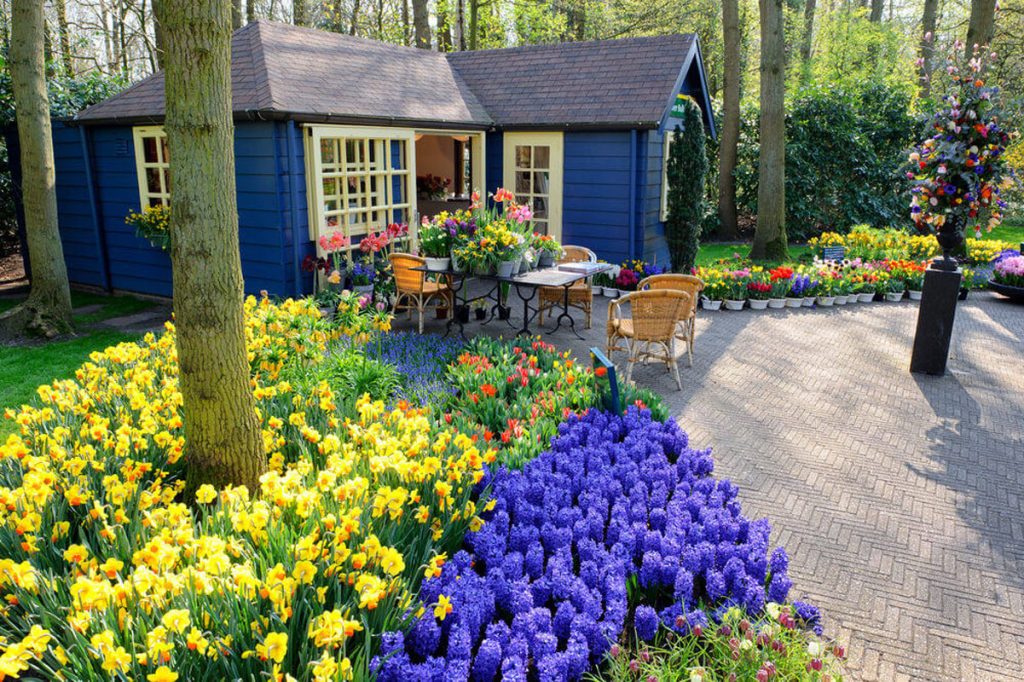If someone has summed up the meaning of what it feels to keep a garden, it is Victorian poet Alfred Austin. He said, “The glory of gardening: hands in the dirt, head in the sun, heart with nature. To nurture a garden is to feed not just the body, but the soul.” And to his poetic words, allow me to add, a ‘green’ soul that has taken saving nature to heart.

So, if you are building your house or trying to grow a garden, it is only natural that you try to keep it as eco-friendly as possible — a garden that will clean the air around it, give shade to humans and animals alike and attract all kinds of birds, butterflies, insects, and friendly crawlies that pollinate and regenerate the soil.
Austin also had a philosophy about gardening that he put into words that are the most needed in today’s fast paced, self-centric, materialistic world. To quote, “There is no gardening without humility. Nature is constantly sending even its oldest scholars to the bottom of the class for some egregious blunder.”
Following his sentiment, I have researched what would be the best plants to put in the sustainable garden that will maintain the delicate balance of nature.
I looked up the low maintenance plants that will be easy to look after. Among the tall ones I would bet on the typical tropical Areca palm which grows up to 15–20ft, has long feathery fronds, and looks great in the corners. Though it needs to be watered regularly, it can be grown both in the sun and the shade. It goes with the botanical name Dypsis lutescens. The other tall plant with spiky large leaves that could dominate the garden is Agave (botanical name: Agave Americana). It requires hardly any maintenance and very little water and can grow in the ground and in a pot.
Let’s shift to a choice of hedges, and I would vote for the most popular — the bougainvillea, which spreads itself elegantly on any fence and comes in a riot of colours. It grows in any soil and requires very little watering and pruning. It can be combined well with the low maintenance spider plant (botanical name: chlorophytum comosum), which hangs in a graceful manner and again is tolerant of all kinds of soil and light. Add to it the snake plant (botanical name: Sansevieria trifasciata) with its long yellow and green stiped leaves and you have an interesting low maintenance combination that can dress up the borders of your garden.
Now for the smaller low maintenance plants that can take centre stage — the succulent Jade and the fleshy aloe vera. Jade (botanical name: Crassula ovata) has fleshy bright green leaves and requires very little watering. The same goes for aloe vera (botanical name Aloe barbadensis) that is used for its healing properties and often used to moisturise the skin.
Talking about healing, it would be a great idea to have a small herbal patch on one corner along with some leafy vegetables that could be plucked straight off the soil and cooked. Garden experts suggest a host of such plants, but I found the best were tulsi, aloe vera, ajwain (ajowam caraway), basil, mint, spinach, and lemongrass. They are useful in every kind of cooking.
But where are the flowers? And how can we have a garden without the most beautiful blooms. Roses do well in colder climates, but they require tending to and good sunshine to thrive. The Peace Lily (botanical name: Spathiphyllum spp) with its white flowers and long, green leaves is a great choice as it requires less maintenance and can thrive in all light conditions. Of course, if you choose to grow the most attractive flower of all, aptly called Bird of Paradise (botanical name: Strelitzia reginae) your garden may well become the envy of all neighbours as this beautiful flower is immensely attractive and resembles the head of a bird. However, it requires regular watering but can withstand different light conditions.
Don’t forget to plant a few of the most fragrant of flowers — jasmine (botanical name: Jasminum spp), which can also be worn in the hair or used for religious ceremonies. Though it requires watering it is a hardy plant once it takes root or is potted. The hibiscus (botanical name: Hibiscus rosa-sinensis) is another good choice, though regular watering is a must. It’s used in ceremonies and its colourful large flowers attract butterflies and bees.
And now that your garden is ready, what about the periphery? In fact, the periphery is sometimes all that some houses have. And these need the best trees possible. Though this depends on the part of the country that you live in, there is a variety here that you can choose from. Let’s start with the good old neem tree (botanical name: Azadirachta indica). Tall, shady and full of medicinal properties, it is rightly called the ‘all-rounder’. Matched with the Ashoka evergreen tree (botanical name: Saraca asoca) that has orange-yellow blooms, they make a pretty picture. And if you add to it the fire red and orange of the riotous flowers of the Gulmohar tree (botanical name: Delonix regia) your house would have shade and a colourful disposition. In my opinion every house or colony is incomplete without a magnificent tree — the parijat (botanical name: Nyctanthes arbor-tristis). In winter its fragrance and its delicate flowers that fall to the ground are heavenly.
Many people prefer to have useful fruit trees in their front yard or backyard and that’s not a bad idea at all. For most the mango tree (botanical name: Mangifera indica) that has fruits of hundreds of varieties is a favourite and can be chosen according to the variety that thrives in your part of the country. The jamun tree (botanical name: Syzygium cumini) is a wonderful choice as it grows tall, gives shade, and gets profusely full of the jamun fruit that is very good for diabetics. The guava tree (botanical name: Psidium guajava) too grows amazingly well, even in the hot summer months. It gives fruits in abandon that are packed with nutrients.
Apart from these trees, there are many others that could be chosen but do insist that they are native to the region. It would be prudent to adopt a drip irrigation system instead of sprinklers or a watering can to save water and keep the soil moist. Most of all avoid all chemical fertilisers and pesticides. It would be better to use organic pest control like neem or garlic spray or plants that deter pests. If you read up on organic farming techniques and make use of kitchen waste and vermicomposting, you would have achieved eco-friendly green space in your home. And here I’d like to quote the poet Minnie Aumonier: “When the world wearies and society fails to satisfy, there is always the garden.”
The writer is a senior journalist who writes on environmental issues






